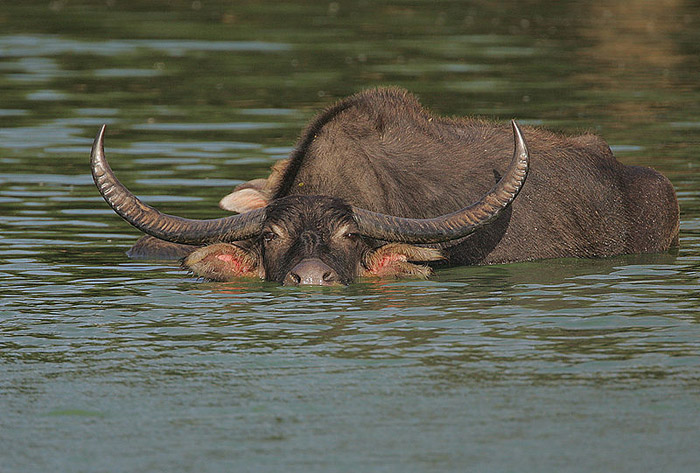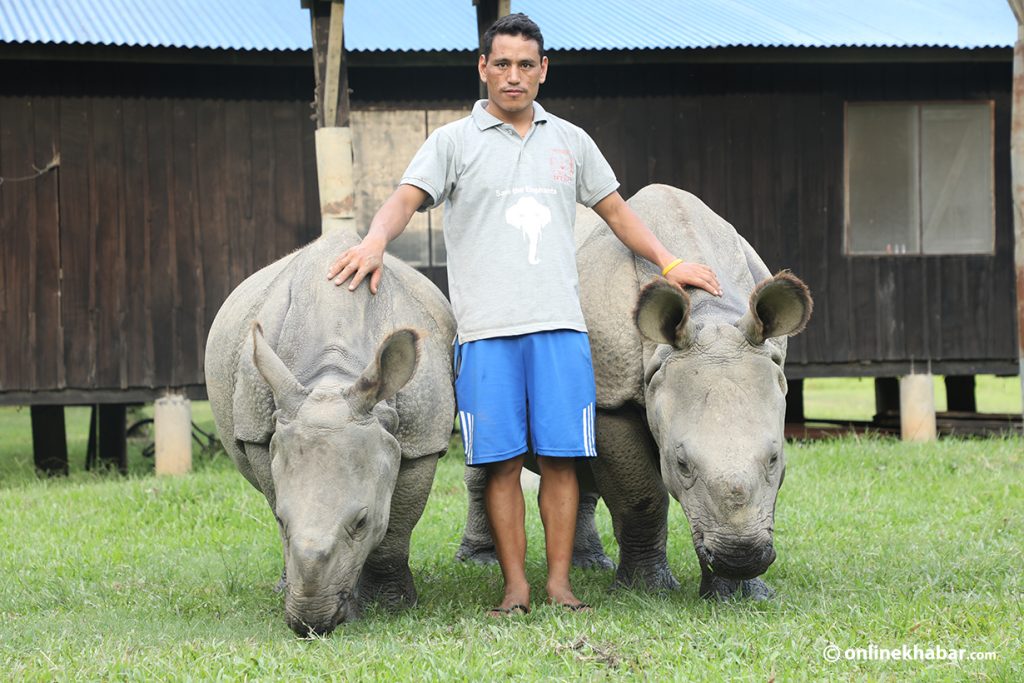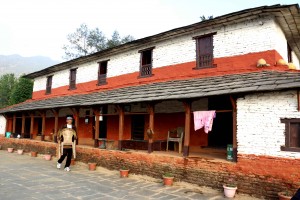
“Because we invade their natural habitat and kill them.
Because for sport, we kill them.
Because we have gun power, we kill them.
Basically, we kill for fun. For money. For greed.
All animals ever do, is kill if they need.” —Mohona Mukherjee
The lives of humans and animals have always been profoundly intertwined. That’s a gospel handed down to us from time immemorial. Over time, the world became more crowded both for Homo sapiens and the denizens of the wild, the latter being the most affected as the so-called civilised bipeds penetrated further into their habitat.
In the early ages, the human race was in a constant state of insecurity and fear of the wild animals. With the advent of civilisation the human-animal-relation scenario took a dramatic change. Today, the animals in the wild seem to be more afraid of the humans—even the predators appear to shun proximity with the ‘earthlings’.
Startling news hit the press when the University of Oxford’s Wildlife Conservation Research Unit reported to Discovery News that fear of humans has become a key factor in the Makgadikgadi Pans National Park in Botswana, Africa. It further stated that the lords of the jungle, the lions in the park live in a ‘landscape of fear’ as a result of threats posed by human intervention.
This will surely make a lasting impression as the new members of the lion family through their mother and other pride members will learn to fear humans as they grow up, report the wildlife scientists.
This ‘fear of humans’ phenomenon in the animals from the wild somehow seemed to connect with a hilarious anecdote I am going to relate here, which took place a few years ago when four friends of mine went fishing.

The friends from Dharan, eastern Nepal, decided to try their hand at angling at the famous Koshi Tappu. Excited as they were, as usual, whenever a fishing jaunt was planned, everybody seemed to make a fuss over his fishing tackle and gear—what to pack and what to forget.
Next morning they started early and caught a bus to west Kusaha, Chatara, where the Koshi Tappu Wildlife Reserve is located. After acquiring a fishing permit for the day, the foursome headed for the river bank.
Established in 1976, the Koshi Tappu Wildlife Reserve, a floodplain of the Sapta Koshi River, consists of 175 sq km of grass and wetlands and encompasses Sunsari, Saptari and Udaypur districts. The reserve was designated as a Ramsar Site in 1987.
Without losing a moment, the gang spread out and started casting their spoon from the river bank. The Sapta Koshi, the largest river system in the country, stretched out in all its glory—awesome and dignified. Their main quarry for that morning was the Golden Mahseer, and if that failed, they would not mind settling for a Goonch(catfish) or two—if luck favored them at all.
Spoon fishing is a common lure fishing practiced worldwide and in Nepal too—a favorite of the Dharan anglers. It is very simple—all you do is cast your lure, wait a few seconds to let your metal bait travel to the bottom then start retreating.
The idea is to dupe the fish with the spoon which spins on its way back when the line is retrieved replicating a live small fish—and the resident fish takes a bite and gets hooked.
For two hours at a stretch the fishers followed a routine cast-and-retrieve like the rhythmic ticking of a clock working the river up and down—a tedious and tiring job indeed. No catches, not even a feeble bite came their way. That’s how it is like with fishing—you are not lucky all the time.
The March morning sun was up and the fishers were starting to feel the heat. Time to take a short breather, decided the group and gathered on a small knoll close to a stretch of elephant grass that colonised the sand banks of the river in patches.
“Hey guys, I’ve to evacuate my bowels,” said one of the friends and headed for the nearest tall grasses. The rest of the group started unpacking their lunch and began eating.
Hardly had they finished eating than a figure broke cover from the tall grasses and dashed towards the seated group yelling at the top of his voice. Fright written all over his face, he bounded towards his friends as if there was no tomorrow for him.
The group sitting on the knoll watched dumbstruck because they were witnessing not one, but two bizarre scenes happening simultaneously.

The moment their friend bolted, a large black Arna, wild water buffalo(Bubalus arnee) carrying a pair of formidable-looking horns crashed through the tall grasses and galloped, as it were, lighting, to the opposite direction clearly in sight while crossing a small clearing. Water buffaloes are large, powerful animals weighing close to 1,000 kg or more.
Within seconds, it re-entered another dense patch of tall grass and disappeared. Evidently, the poor animal looked equally frightened, if not, more.
Then, all hell broke loose as the group bent double, slapped their thighs and shrieked with laughter as they watched their panting friend still holding his unfastened pants, shell-shocked and shaking. It took him some time before he could regain his breath and recount what had happened.
“I was squatted facing the dense grasses towards the river,” he began.
“Moments later I heard some kind of rustling sound. It stopped. But a few seconds later it sounded again. It felt as if something was coming my way. I thought you guys were again up to your little pranks, you are always.”
“And there he was, just 5 ft away his large bulging eyes menacingly boring into mine. I almost fainted. Suddenly I heard a loud grunt and a snort and next thing I knew I was going hell for leather yelling at the top of my voice. The rest you guys saw,” he finished.
Wild water buffaloes can be very dangerous. Cases of wild buffalo attacks have been reported frequently in Koshi Tappu areas. Such incidents happen when villagers go to the river banks to collect fodder.
My friend had a close shave, scared to death, but by the looks of things, it appeared the other way round to me—he gave the poor buffalo the fright of his life instead!
Singh is a 65-year-old outdoors man, lost in his own little adventures. Interests? It used to be hunting; it stopped during the Maoist insurgency. Then came fishing followed by mountain biking. So, his passions are writing, mountain biking and fishing. Ambition? Ride his mountain bike from Beni, Baglung, to Lo Manthang and Upper Mustang.
























